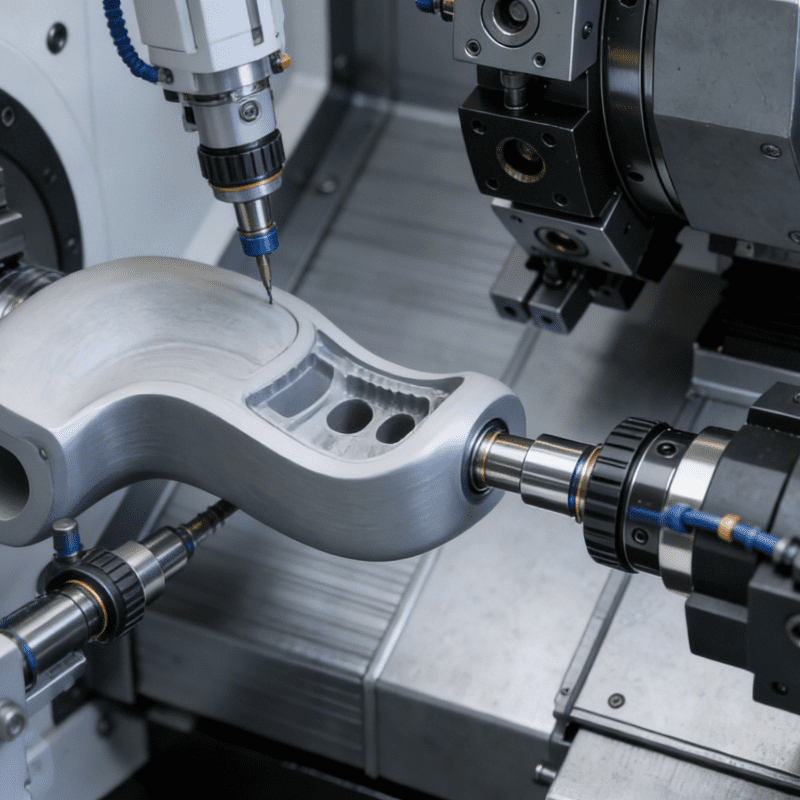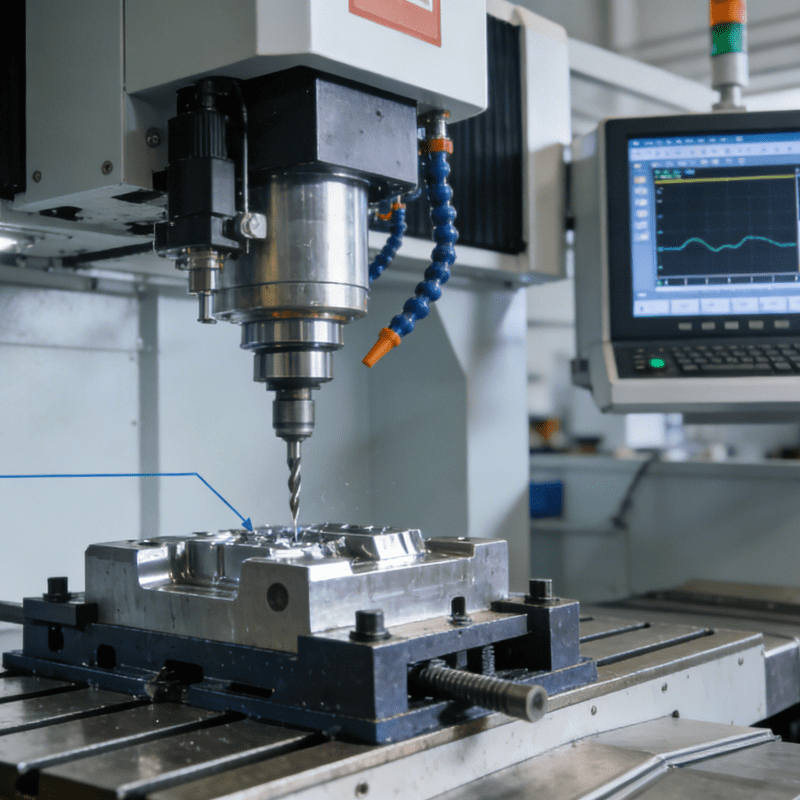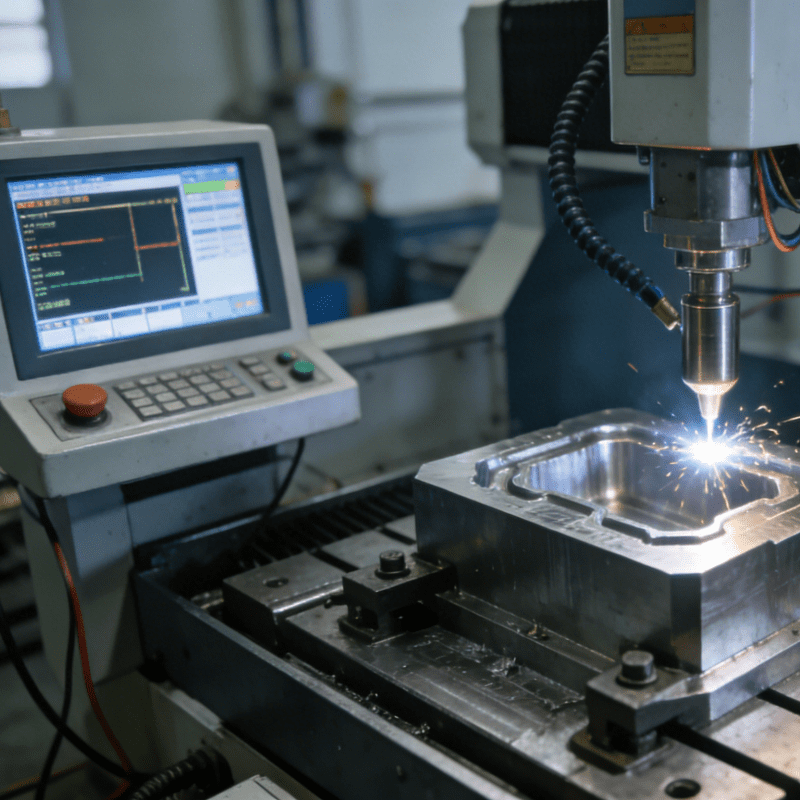Table of Contents
ToggleCNC Lathe Automatic Loading/Unloading System: Elevating Productivity and Precision in Machining

In the realm of precision machining, CNC lathes are the backbone of producing cylindrical components—from automotive axles to medical implants. However, traditional manual loading/unloading processes introduce bottlenecks: inconsistent cycle times, operator fatigue leading to errors, and safety risks from heavy part handling. The CNC tekinimo staklės automatinė pakrovimo / iškrovimo sistema emerges as a game-changing solution, integrating robotics, intelligent sensing, and seamless automation to transform standalone lathes into fully optimized, lights-out manufacturing cells. By eliminating human intervention in repetitive tasks, this system delivers unmatched productivity, accuracy, and flexibility, making it indispensable for modern machining operations.
The Core Components: How Automatic Systems Redefine Machining Efficiency
A state-of-the-art system combines hardware and software to create a unified, adaptive workflow:
1. Robotic Arms: The Muscle Behind Precision Handling
Whether a 6-axis robot for complex orientations or a SCARA robot for high-speed planar movements, the system’s robotic core offers:
- Payload Versatility: Handles parts from 0.1kg (micro-shafts) to 50kg (heavy-duty industrial components), with grippers designed for smooth surfaces (vacuum), rough castings (toothed jaws), or delicate finishes (soft-touch 硅胶 pads).
- Repeatable Positioning: Achieves ±0.02mm accuracy when inserting parts into lathe chucks, eliminating manual alignment errors that cause tool wear and scrap—critical for aerospace components requiring micron-level precision.
- Collision Avoidance: Built-in force sensors detect unexpected resistance (e.g., misaligned chucks) and pause motion, protecting both the robot and the $100K+ lathe from damage.
2. Vision-Guided Navigation: Seeing Beyond the Machine
A 3D vision system with AI-powered recognition solves the chaos of part positioning:
- Bin Picking for Randomly Stacked Parts: Identifies even similar-looking components (e.g., M10 vs. M12 bolts) with 99.8% accuracy, using deep learning to distinguish subtle size/shape differences.
- Real-Time Chuck Alignment: Adjusts the robot’s trajectory mid-movement to account for lathe chuck thermal expansion (a common issue in 24/7 operations), ensuring perfect part centering every time.
- Pre-Machining Inspection: Scans incoming parts for surface defects or dimensional deviations, preventing flawed blanks from entering the lathe and saving costly machining time.
3. Intelligent Software: The Brain of the System
User-friendly interfaces and advanced algorithms streamline operations:
- No-Code Programming: Drag-and-drop workflows let operators define new part handling sequences in minutes, with pre-built templates for common tasks (e.g., “load cylindrical part,” “unload finished component”).
- AI-Optimized Cycle Times: Machine learning analyzes thousands of cycles to refine robot paths, reducing loading/unloading time by 15–20% compared to rule-based programming.
- IoT Integration: Feeds real-time data (lathe utilization, gripper wear, part throughput) to factory systems, enabling predictive maintenance and proactive scheduling—e.g., replacing a worn chuck jaw before it causes a defect.
Applications: From High-Volume to High-Precision Machining
1. Automotive Component Production: Mass Production with Meticulous Accuracy
In a tier-1 supplier machining 50,000 engine crankshafts monthly:
- The system loads raw castings into a CNC lathe, using force-controlled grippers to secure them without damaging fragile bearing journals. After machining, it unloads finished parts into precision trays, ensuring ±0.01mm concentricity—a requirement for smooth engine operation.
- Result: A leading automaker achieved 24/7 unmanned operation, reducing labor costs by $400K annually and increasing lathe utilization from 65% to 92%.
2. Medical Device Manufacturing: Micron-Level Precision
For machining 2mm-diameter stainless steel guide wires for catheters:
- SCARA robots with ultra-fine grippers (0.5mm jaw resolution) load bar stock into the lathe, using vision to align the micro-part’s longitudinal axis within ±0.005mm—critical for avoiding bending during high-speed rotation.
- Automated unloaders place finished wires into anti-static trays, with each handling action logged for ISO 13485 traceability, simplifying FDA audits.
3. Aerospace Machining: Handling High-Value Alloys
When machining titanium aerospace shafts (costing $10,000+/unit):
- 6-axis robots with heat-resistant coatings load billets into cryogenic lathes, navigating around complex fixtures while applying controlled force to prevent material deformation.
- Vision systems verify that each part’s serial number is laser-engraved correctly post-machining, ensuring traceability for safety-critical components.
Automatic Systems vs. Manual Handling: A Clear Performance Divide
| Metric | CNC Lathe Automatic System | Manual Loading/Unloading |
| Ciklo laikas vienai daliai | 8–15 seconds (robot-dependent) | 30–60 seconds (operator fatigue) |
| Positioning Accuracy | ±0.02mm (vision-guided) | ±0.2mm (operator skill-dependent) |
| Downtime for Changeover | <5 minutes (software switch) | 30–60 minutes (manual chuck setup) |
| Unattended Operation | 8–12 hours (lights-out capable) | 1–2 hours (frequent operator checks) |
| Scrap Rate Due to Handling | <0.1% | 2–5% (misalignment, dropped parts) |
Technological Innovations Driving the Future
1. Savaime kalibruojantys griebtuvai
AI algorithms automatically adjust gripper pressure based on part material (e.g., aluminum vs. hardened steel), eliminating the need for manual torque adjustments and reducing part marking by 90%.
2. Digital Twin Simulation
Engineers test new part programs in a virtual environment, predicting collisions and optimizing robot paths before physical deployment—cutting trial-and-error time by 50% for complex geometries.
3. Collaborative Robots (Cobots) for Mixed Workflows
Safety-rated cobots work alongside operators in shared spaces, handling heavy parts while humans oversee quality checks, boosting productivity by 25% in hybrid manufacturing cells.
The Business Case: Investing in Machining Excellence
1. ROI Through Operational Rigor
- Labor Cost Savings: Replaces 1–2 operators per lathe, with a typical payback period of 12–18 months in high-wage regions.
- Quality Assurance: Consistent handling reduces scrap and rework costs by 60%, crucial for industries where a single machining error can 报废 a high-value part.
- Scalability: Modular design integrates with existing lathes (new or legacy models), future-proofing factories for Industry 4.0 without ripping out infrastructure.
2. Catalyst for Lights-Out Manufacturing
- 24/7 Productivity: Unattended operation during off-hours (nights, weekends) increases output by 30–40% without adding labor, ideal for meeting just-in-time (JIT) delivery demands.
- Data-Driven Insights: Real-time analytics identify bottlenecks (e.g., slow gripper response, lathe tool wear), enabling continuous process improvement.
The Future of CNC Machining: Where Automation Meets Intelligence
As global manufacturing shifts toward higher precision, shorter lead times, and greater autonomy, the CNC Lathe Automatic Loading/Unloading System is no longer an option—it’s a necessity. By combining the brute efficiency of robotics with the smarts of AI and vision technology, it turns standalone machines into interconnected, self-optimizing cells. Whether machining millions of automotive parts or a handful of aerospace prototypes, this system proves that in the age of digital manufacturing, automation is the bridge between ambition and achievement.
#CNCLathe Automation #Robotic Loading Unloading #Smart Manufacturing Solutions



















